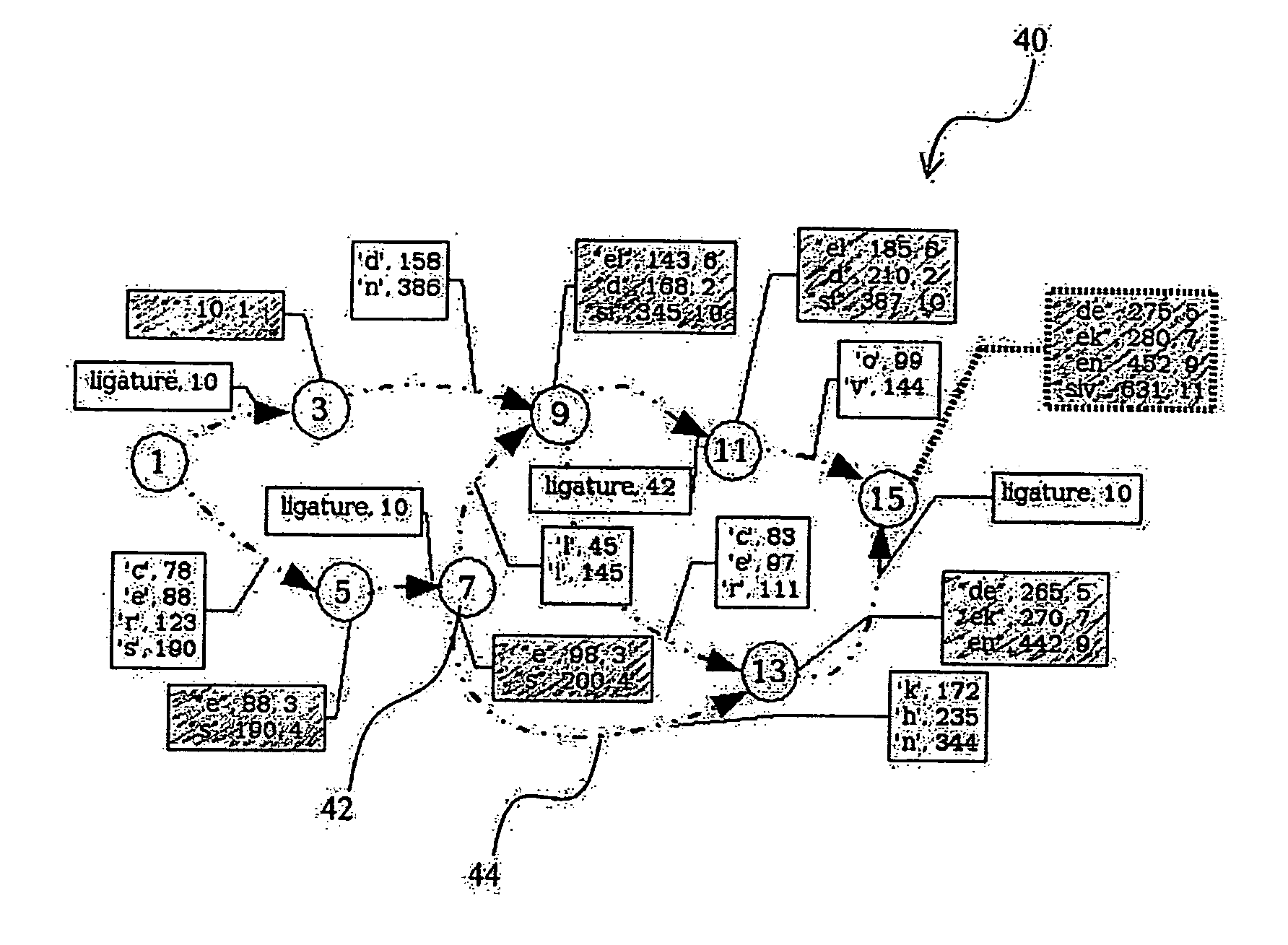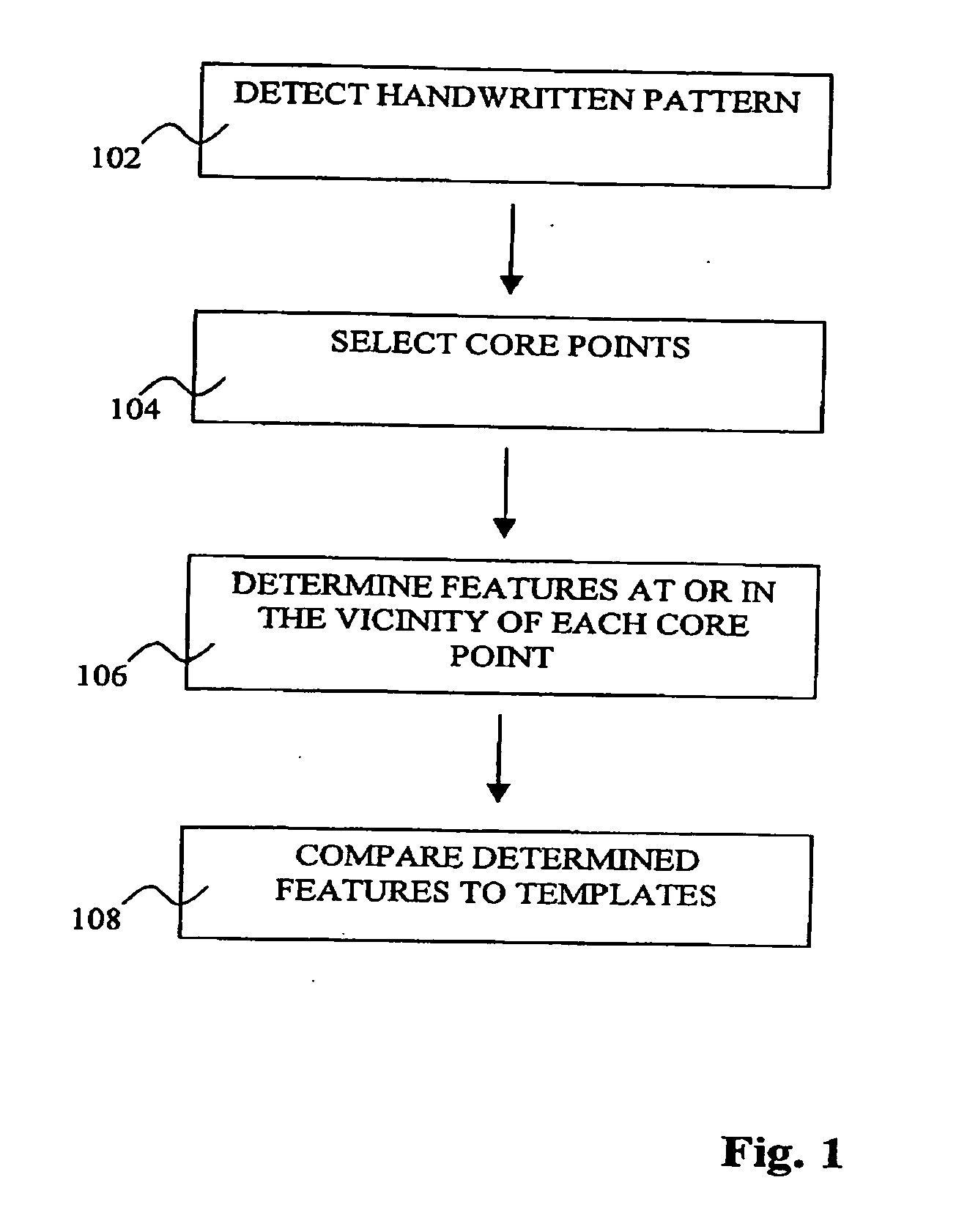Recognition graph
a recognition graph and graph technology, applied in the field of handwritten pattern recognition, can solve the problems of increasing the complexity of cursive handwriting recognition, complicating the construction of a lucid sequential recognition system, and annoying users, and reducing the waiting time for users
- Summary
- Abstract
- Description
- Claims
- Application Information
AI Technical Summary
Benefits of technology
Problems solved by technology
Method used
Image
Examples
Embodiment Construction
[0047] Referring to FIG. 1, a method for recognizing a handwritten pattern will now be described. First, the handwritten pattern may be detected, step 102. Typically, a user may write the handwritten pattern with a stylus on a pressure-sensitive screen, whereby the handwriting may be detected by sampling the position of the stylus at regular intervals. In this way, a time-sequence of points may be obtained. The handwriting may be detected in several other ways, for example, such as by using sensors that detect an electrical connection being formed between a pen and a writing surface or sensors detecting movements of a pen. Also, the handwritten pattern may be detected by scanning a paper on which the handwritten pattern has been written. Then, the handwriting may be detected as a sequence of points on a writing surface, wherein the sequence depends on where the points are placed in relation to each other, i.e. a spatial sequence of points.
[0048] After detecting the handwritten patt...
PUM
 Login to View More
Login to View More Abstract
Description
Claims
Application Information
 Login to View More
Login to View More - R&D
- Intellectual Property
- Life Sciences
- Materials
- Tech Scout
- Unparalleled Data Quality
- Higher Quality Content
- 60% Fewer Hallucinations
Browse by: Latest US Patents, China's latest patents, Technical Efficacy Thesaurus, Application Domain, Technology Topic, Popular Technical Reports.
© 2025 PatSnap. All rights reserved.Legal|Privacy policy|Modern Slavery Act Transparency Statement|Sitemap|About US| Contact US: help@patsnap.com



